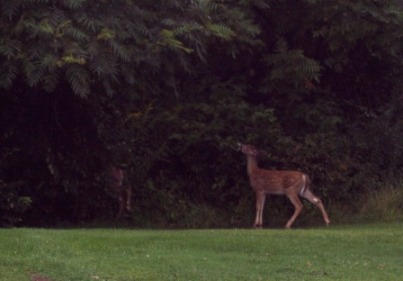Now that they’ve decided corporate agriculture is cleaner?
I suppose this was inevitable. First, the incidence of infections from food-borne pathogens is decreasing. For example in the U.S., between 1996 and 2004, E. coli O157:H7 infections are down 42 per cent (betcha didn’t know that, did you!!!) (What? We’re not dropping like flies??? Shocking.)
2. This can possibly be attributed to a systematic approach to establishing food handling standards dubbed “Hazardous Analysis and Critical Control Point” (HACCP).
Okay, fine. But
3. Here’s how the above-linked article (from CBC News) [UPDATE: link no longer good, sorry] concludes:
The HACCP approach would never work if you had 10 million farms, 50,000 small feed mills, and 10,000 small processors. What allows HACCP to succeed is the much-demonized size and reach of modern agriculture. A big, mechanized operation like Natural Selection Foods can invest in record keeping, sanitation, delivery vans in a way that smaller ones would find worse than onerous.
Alrighty then. That’s quite a statement. “Worse than onerous.”
Would they really?
Personally, I’d like to hear what some actual small farm operators have to say on that topic. Until then, Strauss comes across, to me, like someone who found something provocative to write and liked it so well he didn’t worry much about whether it could be backed by facts.
(P.S. While tinkering with this post, I found a website of vintage audio where you can listen to a 1918 recording of “How Ya Gonna . . .” sung by Harry Fay.)

